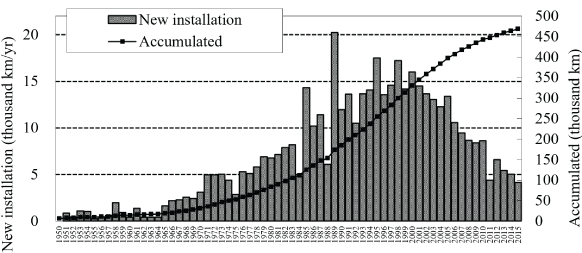
Figure 1: New sewer construction and accumulated length by year in Japan.
Made by author, based on the statistics of Japan Sewage Works Association [3].


Yusuke Inagaki Hiroshi Ikeda Yoshihiko Yato Patrik Ken Takeuchi Masatoshi Anakura*
NJS Co., Ltd., Minato-ku, Tokyo, Japan*Corresponding author: Masatoshi Anakura, NJS Co., Ltd., 1-1-1 Shibaura, Minato-ku, Tokyo 105-0023, Japan, E-mail: masatoshi_anakura@ njs.co.jp
The objective of this study is to evaluate the effectiveness of utilizing a UAV (Unmanned Aerial Vehicle) in sewer pipe inspection as a method to screen pipelines and identify which require further detailed inspection. An experiment was conducted by comparing inspection speed, operator’s safety, and reliability of data against conventional inspection methods, CCTV (Closed Circuit Television) and manhole camera. The result was that UAV could inspect the same pipeline length in fewer days when compared to the other methods proving to be highly efficient, and can also be considered a safe method as the operation can be completed without the operator entering a manhole throughout the inspection. The reliability of data was also sufficient as the UAV could collect images of inside the pipe with high visibility. From the obtained result, it can be said that UAV is an effective screening method to efficiently conduct CCTV inspection.
UAV; Sewer pipe inspection; Screening; Operator safety; Maintenance
Modernization of the sewer system in Japan started in 1965, followed by an extensive construction in the next 20 years. By the end of 2018, the sanitation coverage reached 79.3%. Along with the growth of coverage rate, the total sewer length has grown at a rapid pace, reaching approximately 480,000 km in the recent statistics [1].
The typical service life of a sewer pipe is considered to be 50 years [2]. The latest statistics show that 17,000 km, approximately 4% of the total existing pipes exceed this age. Every year, more than 3,000 urban road collapse cases occur due to the deterioration of aging pipes, causing a serious concern to the society. As we see the increasing number of aging pipes, we fearto see more road collapse incidents [3].
The main method today in Japan for detailed visual inspection of sewer pipes is CCTV (Closed Circuit Television). CCTV inspection can find defects within the pipe and collect close images for inspection. Data reliability is high as CCTV will stop to see each defect, however it is not the most efficient as the operator would search for any defects as the CCTV travels through the pipe. Safety is of concern, as it requires the operator to enter the manhole to insert the CCTV inside the pipe. Such environment may have low oxygen or contain hazardous gas. It can also be unsafe for the operator in cases of sudden rainfall [4].
Manhole cameras are commonly used for screening the pipeline to identify the sections which require detailed inspection. It is an efficient and safe method but has a limited line of sight not enough to photograph the entire pipe path.
Pipeline screening and prioritizing is considered to be effective in sewer pipe maintenance. An efficient and safe method to visualize the pipeline entirely can be highly effective in screening. This study focuses on utilizing a UAV (Unmanned Aerial Vehicle, commonly referred to as “drone”) as an efficient, safe, and reliable way of screening pipes. Evaluation was conducted with an experiment comparing UAV against commonly used inspection methods, CCTV and manhole camera [5,6].
The devices used for inspection were CCTV, manhole camera and UAV. CCTV had a resolution of 410,000 pixels, the manhole camera had 2,000,000 pixels, and the UAV, 2,000,000 pixels. The specification of the UAV can be found in table 1 and its appearance in figures 1 and 2.

Figure 1: New sewer construction and accumulated length by year in Japan.
Made by author, based on the statistics of Japan Sewage Works Association [3].
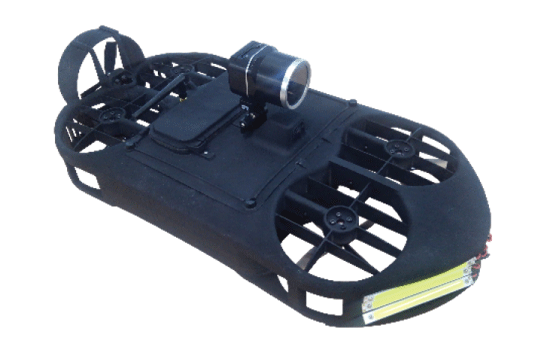
Figure 2: Appearance of the UAV.
| Item | Specification |
| Size | W:250mm L:570mm H:190mm |
| Weight | 2.0kg (including battery) |
| Flight duration | Approx. 5min |
| Flight speed | 0.5m/s to 3.0m/s |
| Inspection camera | Panasonic stabilizer camera |
| Resolution | Approx. 2,000,000 pixels |
| View angle | 84 deg. |
Table 1: Specification of the UAV.
The pipeline section used for evaluation was as below:
The paths are lined up in a straight line, as can be seen in figure 3. The pipe was cleaned before CCTV inspection but not for manhole camera or UAV.

Figure 3: Inspection Path.
The inspection team inspected the same section with CCTV, manhole camera and UAV. The team evaluated the efficiency/ reliability of UAV by inspection speed, operator’s safety and reliability of data.
The index values of “inspection speed” were the number of days required for inspection, the number of manhole openings, the average inspection path per manhole and the average of inspected length. Efficiency can be judged high if the number of days required for inspection with UAV is fewer than existing methods.
The index for “operator’s safety” was set to be the number of manhole openings which operators were not required to enter. A higher number would mean the operator is less exposed to unsafeness such as low oxygen, hazardous gas, or sudden rise of water level due to unexpected rainfall.
The reliability of the data obtained by UAV was examined by the number of detected defects matched to the CCTV results, i.e., setting CCTV as a benchmark. When the detection rate is 100%, the reliability can be said to be the same to CCTV. When the rate is higher compared to manhole camera, the reliability can be said to be greater than that of a manhole camera.
The comparison of the three inspection methods was evaluated by (1) inspection speed, (2) operator’s safety and (3) reliability of data. Details of each evaluation are described below.
The total duration time for UAV to inspect the length was 4 hours and 18 min, including preparation, tuning of devices and clean up. Converted to an entire working day of 8 hours, a whole day inspection length would be 2,904 m.
Tables 2 and 3 shows the number of days required to inspect the total length of 1,324.8 m: CCTV=4 days, manhole camera=2 days and UAV=1 day. UAV had the least amount of days needed compared to CCTV, manhole camera. This owes to the fact that UAV required less time to set up at each manhole, can travel through the pipe faster than CCTV, and also was able to inspect one path in the upstream direction and two paths in the downstream direction, resulting in a maximum of three paths from a single opening. The UAV’s average inspection time per manhole was 12 min 23 seconds.
| Index | Values |
| Inspection speed | Number of inspection days |
| Operator’s safety | Number of inspections without entering the manhole (Inspections without entry / Manhole openings) |
| Reliability of data | Matching rate of defect detection to CCTV |
Table 2: Comparison Index.
| CCTV | Manhole camera | UAV | |
| Number of days needed | 4 | 2 | 1 |
| Number of manhole openings | 30 | 36 | 15 |
| Average inspection path per manhole | 1.0 | 0.8 | 2.0 |
| Average of inspected length per manhole | 44.16 | 36.8 | 88.32 |
Table 3: Comparison of the inspection methods.
The number of manhole openings required to inspect the whole length was, CCTV=30 openings, manhole camera=36 openings and UAV=15 openings, showing UAV to have the least number of openings of all. The average number of inspection paths per manhole was CCTV=1.0 path, manhole camera=0.8 path and UAV=2.0 paths. The average length of inspection per manhole was CCTV=44.16 m, manhole camera=36.8 m and UAV=88.32 m. The results indicate that UAV inspection is most efficient of the three methods tested, in terms of the number of days required, average number of inspection paths and inspection length per manhole [7,8].
Operator’s safety was quantified by the number of manhole openings and number of inspections without the operator entering the manhole. The ratios were CCTV=0%, manhole camera=100%, and UAV=93.3%. The one opening recorded for UAV had happened when the operator misguided the UAV to a deep gap and had to enter the manhole to retrieve it. This could have been prevented by examining the construction drawings prior to the inspection. Basically, an inspection by UAV was able to carry out the whole process from above ground, including preparation, inspection and clean up (Figures 4 and 5).
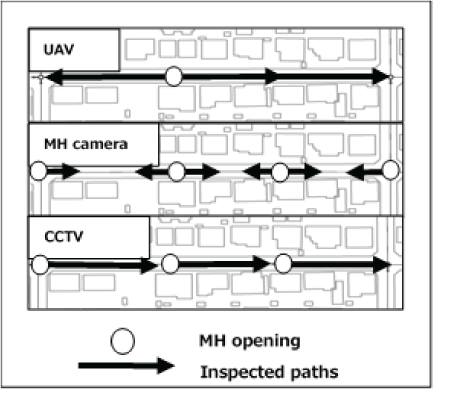
Figure 4: Manhole openings and the inspected paths.
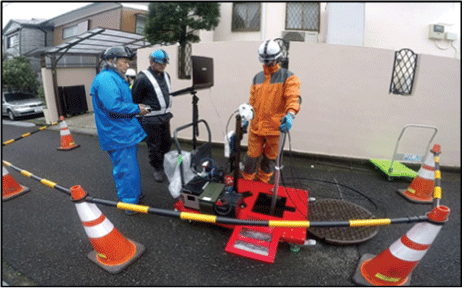
Figure 5: Operators working from above ground in UAV inspection.
The results of CCTV are shown in table 4 and the levels of severities (A-C) are explained in table 4 as A being the most serious level. The criteria shown in table 5 was taken from the “Guideline for sewer management” issued by Japan Sewerage Works Association (JSWA) [4,9]. A manhole camera was also used to inspect the same section and the result was compared to that of CCTV. The visibility (screen clarity) was evaluated by how many defects the method detected for each item (Figure 6). Figure 6 shows a crack image obtained by CCTV, UAV and a manhole camera.

Figure 6: Crack obtained by each inspection method.
| Corrosion | Sagging in vertical direction | Breakage | Cracks | Displaced joints | Infiltration | Extrusion of lateral pipes | ||||||||||||||
| A | B | C | A | B | C | a | b | c | a | b | c | a | b | c | a | b | c | a | b | c |
| 0 | 1 | 2 | 0 | 0 | 0 | 3 | 8 | 6 | 1 | 5 | 8 | 0 | 0 | 3 | 0 | 0 | 1 | 0 | 0 | 1 |
| Root intrusion |
Attached deposit (mortar) |
Others | Total | |||||||||||||
| a | b | c | a | b | c | a | b | c | A | B | C | Total | a | b | c | Total |
| 0 | 3 | 0 | 0 | 0 | 4 | 0 | 0 | 1 | 0 | 1 | 2 | 3 | 4 | 16 | 24 | 44 |
Table 4: The result of the CCTV inspection.
Explanation for each level A(a) - C(c) is in table 5.
Whole length assessment: A=most severe→C=less serious
Local (pipe-wise) assessment: a=most severe→c=less serious
| Whole length assessment | Levels Sewer conditions \ | A | B | C | |
| Corrosion of pipes | Steel reinforcement visible | Aggregate visible | Surface roughness | ||
| Deformed in Vertical direction | (inner diameter) less than 700 mm | 100 % or greater of inner diameter | 50 % or greater of inner diameter | less than 50 % of inner diameter |
|
| (inner Diameter) between 700 mm and 1,650 mm | 50 % or greater of inner diameter | 25 % or greater of inner diameter | less than 25 % of inner diameter |
||
| (inner diameter) between 1,650 mm and 3,000 mm | 25 % or greater of inner diameter | 12.5 % or greater of inner diameter | less than 12.5 % of inner diameter | ||
| Local (pipe-wise) assessment | Levels Sewer conditions \ | a | b | c | |
| Breakage/ longitudinal crack | Reinforced concrete pipe, etc. | Collapsed |
Longitudinal crack 2 mm or greater in width |
Longitudinal crack less than 2 mm in width |
|
| Longitudinal crack 5 mm or greater in width |
|||||
| Clay pipe | Collapsed |
Longitudinal crack less than 50 % of pipe length |
-- | ||
| Longitudinal crack- 50 % or greater of pipe length |
|||||
| Circumferential crack | Reinforced concrete pipe (RC) etc. | Circumferential crack 5 mm or greater in width |
Circumferential crack 2 mm or greater in width |
Circumferential crack less than 2 mm in width | |
| Vitrified clay pipe (VC) |
Circumferential crack two-thirds or greater of the circumferential length |
Circumferential crack less than two-thirds of circumferential length | -- | ||
| Displaced joints | Extruded joints | Reinforced concrete pipe etc.: 70 mm or greater | Reinforced concrete pipe etc.: less than 70 mm | ||
| Vitrified clay pipe: 50 mm and over | Vitrified clay pipe: less than 50 mm | ||||
| Infiltration | Gushing | Running | Seeping | ||
| Extrusion of lateral | 50 % or greater of inner diameter | 10 % or greater of inner diameter | Less than 10 % of inner diameter |
||
| Attached deposit, grease | Blockage of 50 % or greater | Blockage of less than 50 % of inner diameter |
-- | ||
| Roots intrusion | Blockage of 50 % or greater | Blockage of less than 50 % of inner diameter |
-- | ||
| Attached deposit, mortar | Blockage of 30 % or greater | Blockage of 10 % or greater | Blockage of less than 10 % | ||
Table 5: Levels of severities [4,9].
The matching rate (of 9 items, excluding “Deformed in Vertical direction” and “Attached deposit, grease” which were not applicable in this section) to CCTV was 11% for manhole camera and 68% for UAV. Out of these results, the rate for critical defects (items 1-5) was 8% for manhole camera and 74% for UAV and for maintenance-related defects (items 6-9), 22% and 44%.
UAV matching results at 74% for critical defects which affect structural integrity can be considered as a high matching rate. Among the items, corrosion, displaced joints and extrusion of lateral pipes scored a 100% match to the result of CCTV inspection. This score owes to the UAV’s capability of being able to fly to the center of the sewer section, collect images from a close distance and detect defects, whereas a manhole camera could only collect images from a manhole. On the other hand, cracks, root intrusion and mortar deposit showed a matching rate of only 50% or less. The reasons for this low matching rate could be caused by the low visibility that UAV occasionally encounters- the downwards airflow generated by the UAV splashes the water and the water sticks to the lens. Or, the narrow viewing angle blurred the image and made it difficult for the operator to detect the defects. Therefore, camera selection will be an issue for future development. The result that lateral blockage showed as low as 0% matching came from the UAV not having a lateral vision. Without this capability, detecting lateral blockage was difficult.
It can be said that even though some items showed less accuracy to CCTV, the overall score was better than that of a manhole camera. Therefore, UAV can be seen as a possible screening method for pipe inspection [10].
The results from the comparison can be summarized as the following.
From the observed results, it can be concluded that UAV inspection can more efficiently and more safely find the area which require a more detailed inspection when compared to CCTV inspection. When compared to manhole camera as a screening method, UAV has similar or better defect detection rate as it can travel through the pipe. It can be said that UAV is an effective screening method to efficiently conduct CCTV inspection (Figure 7).
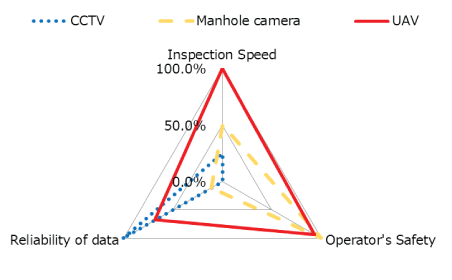
Figure 7: Result of comparison.
Moving forward, optimization of the camera specification can help improve the image quality for a higher defect detection rate, and an overall operational ease of use improvement could allow a much faster inspection using UAV. UAV inspection has the potential to become a highly effective solution for sewer management (Table 6).
| Defects | Rank | CCTV [1] | Manhole camera [2] | UAV[3] | Manhole camera | UAV | |
| Matching rate to CCTV | Matching rate to CCTV | ||||||
| [2]÷[1] | [3]÷[1] | ||||||
| Critical defects | 1. Corrosion | A | - | - | - | - | - |
| B | 1 | 0 | 1 | 0% | 100% | ||
| C | 2 | 0 | 2 | 0% | 100% | ||
| 2. Breakage | a | 3 | 1 | 3 | 33% | 100% | |
| b | 8 | 2 | 8 | 25% | 100% | ||
| c | 6 | 0 | 3 | 0% | 50% | ||
| 3. Cracks | a | 1 | 0 | 0 | 0% | 0% | |
| b | 5 | 0 | 4 | 0% | 80% | ||
| c | 8 | 0 | 3 | 0% | 38% | ||
| 4. Displaced joints | a | - | - | - | - | - | |
| b | - | - | - | - | - | ||
| c | 3 | 0 | 3 | 0% | 100% | ||
| 5. Infiltration | a | - | - | - | - | - | |
| b | - | - | - | - | - | ||
| c | 1 | 0 | 1 | 0% | 100% | ||
| Subtotal | A(a)+B(b)+C(c) | 38 | 3 | 28 | 8% | 74% | |
| Managerial defects | 6. Extrusion of lateral pipes | a | - | - | - | - | - |
| b | - | - | - | - | - | ||
| c | 1 | 1 | 1 | 100% | 100% | ||
| 7. Root intrusion | a | - | - | - | - | - | |
| b | 3 | 0 | 1 | 0% | 33% | ||
| c | - | - | - | - | - | ||
| 8. Attached deposit (mortar) | a | - | - | - | - | - | |
| b | - | - | - | - | - | ||
| c | 4 | 1 | 2 | 25% | 50% | ||
| 9. Blockage of lateral | a | - | - | - | - | - | |
| b | - | - | - | - | - | ||
| c | 1 | 0 | 0 | 0% | 0% | ||
| Subtotal | 9 | 2 | 4 | 22% | 44% | ||
| Total | 47 | 5 | 32 | 11% | 68% | ||
Table 6: The number of defects detected by each inspection method.
Download Provisional PDF Here
Article Type: RESEARCH ARTICLE
Citation: Inagaki Y, Ikeda H, Yato Y, Takeuchi PK, Anakura M (2020) Application of UAV for Sewer Pipe Inspection. Int J Water Wastewater Treat 6(2): dx.doi.org/10.16966/2381-5299.169
Copyright: © 2020 Inagaki Y, et al. This is an open-access article distributed under the terms of the Creative Commons Attribution License, which permits unrestricted use, distribution, and reproduction in any medium, provided the original author and source are credited.
Publication history:
All Sci Forschen Journals are Open Access